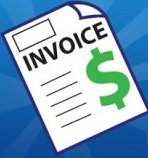 An invoice is an important business document regardless of the type and size of the business. You can rightly define an invoice as a document that you as a small/medium/large business owner would send to your clients or customers intimating them that the payment for the services your firm rendered is due. A professional yet simple invoice template will outline the service(s) you rendered, how much the client owes, account/address where they should send the payment.
An invoice is an important business document regardless of the type and size of the business. You can rightly define an invoice as a document that you as a small/medium/large business owner would send to your clients or customers intimating them that the payment for the services your firm rendered is due. A professional yet simple invoice template will outline the service(s) you rendered, how much the client owes, account/address where they should send the payment.
However, it is also worth mentioning that the days of sending invoices through the postal service are long over. It’s being rapidly replaced by online invoice software on the cloud where monthly or bimonthly invoices can be sent automatically to your client(s) with a simple mouse click. Introducing Invoice app to your business will help businesses go partially paperless; thereby enabling businesses to be environmentally friendly. It also goes without saying that software generated invoices are more professional compared to the traditional invoice templates. For those who prefer the traditional paper invoice, here are a few tips to create your own invoice, a simple one yet a professional invoice template.
How to Create Invoice Online
Open a Word document and choose a template that suits your business. You can also open a blank invoice template.
Header– Make it known that the invoice is from you. Therefore, the invoice header should contain the name of your business as well as a logo.
Date and unique invoice number– Beneath the header, include the date and the invoice number. Include your name and address along with your contact number. You can also add the client’s name, their contact number and other information you have about them.
Create a table– This is to itemize the products sold or services rendered for which you are billing. If you are billing by project, include the name and description of the project. Ensure that the table contains a column for date, description of the item, rate and the total cost for the item or service. At the bottom of the table, include a subtotal, applicable tax and total. Remember to format the subtotal and final total so they stand out from the rest.
Always remember to leave space beneath the table for you to sign all printed invoices. Include terms and conditions if relevant.
All this hassle can be avoided if your business adopts best invoicing software. There are many different invoicing software that would suit the needs of every business. Some software even offer their standard package free of cost. Check them out before you finalize on a product you want to implement in your business.


